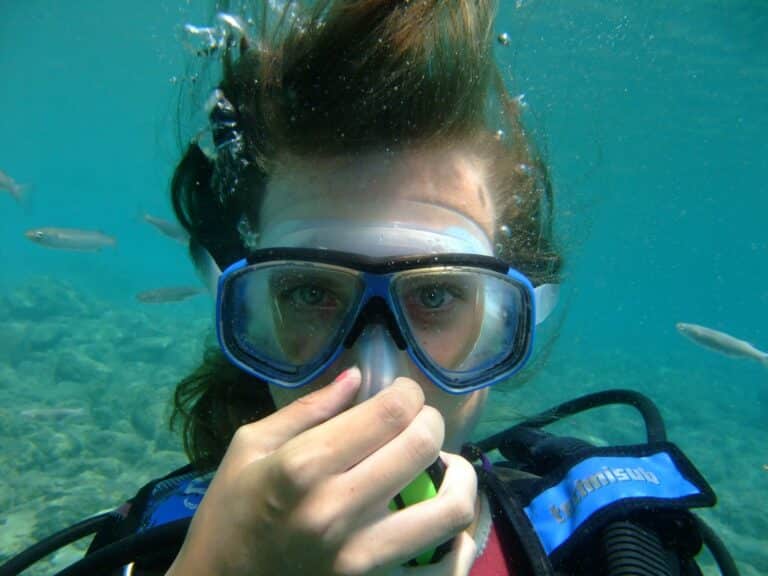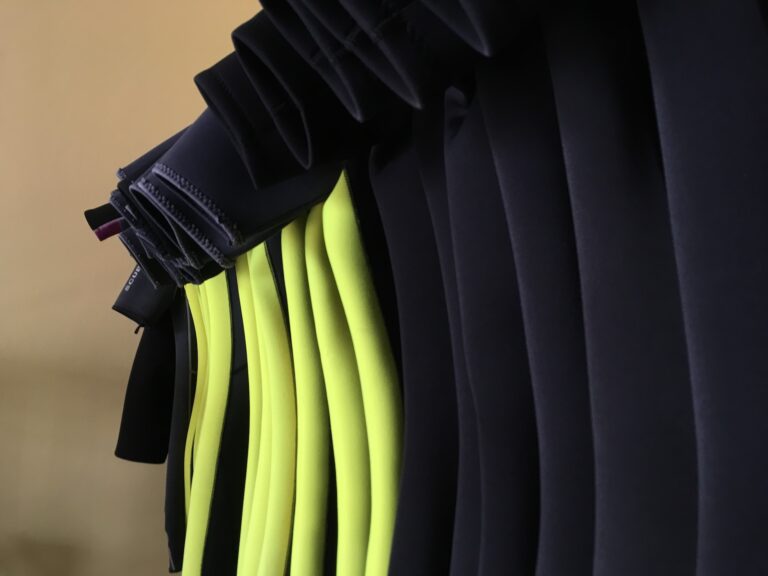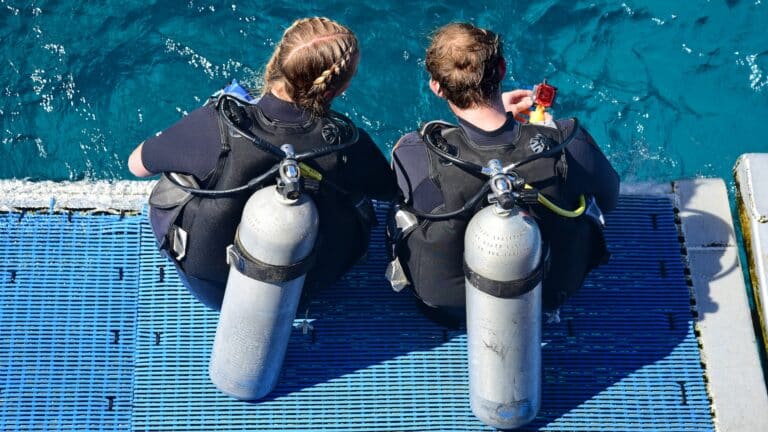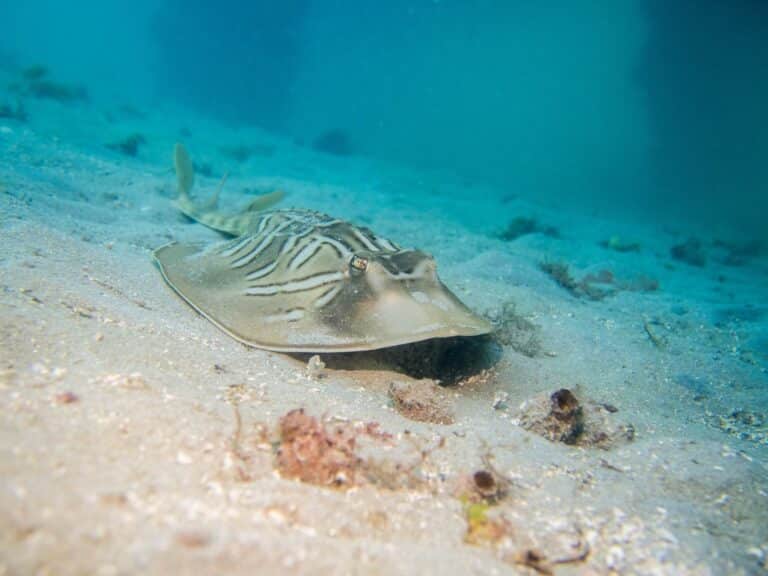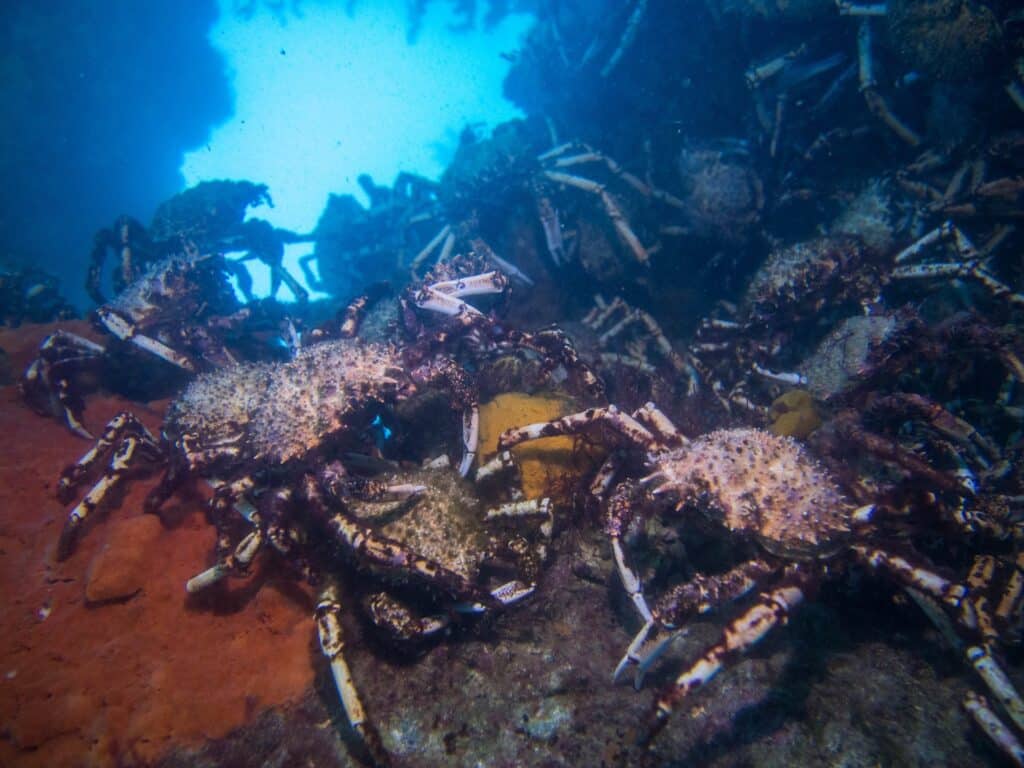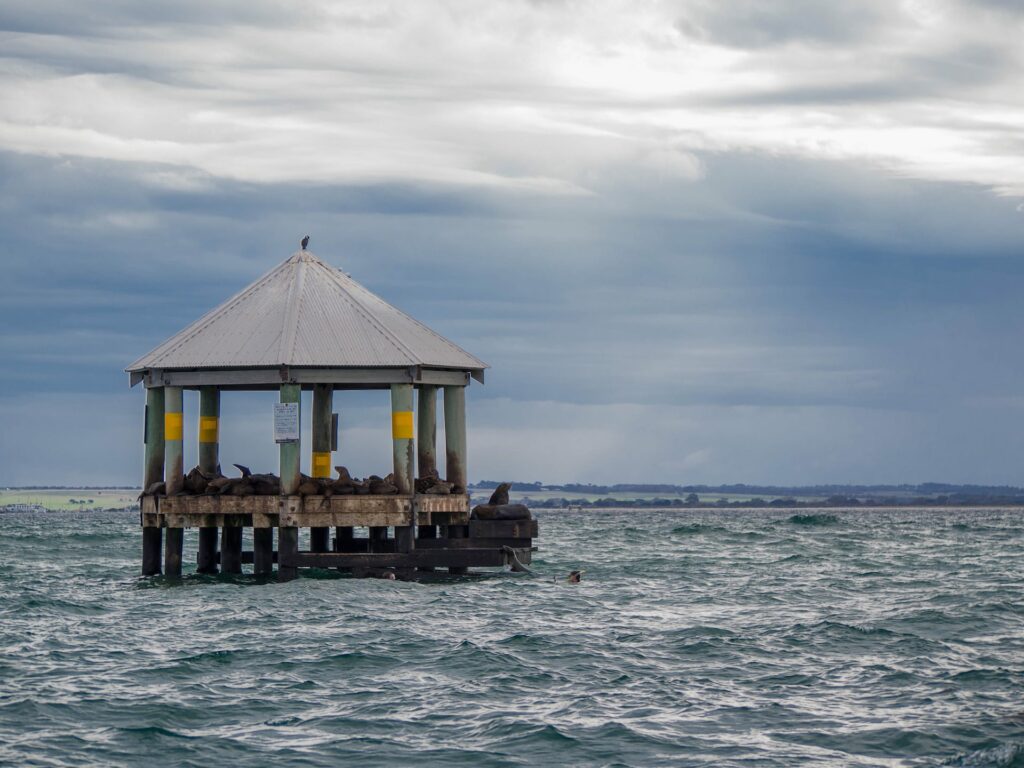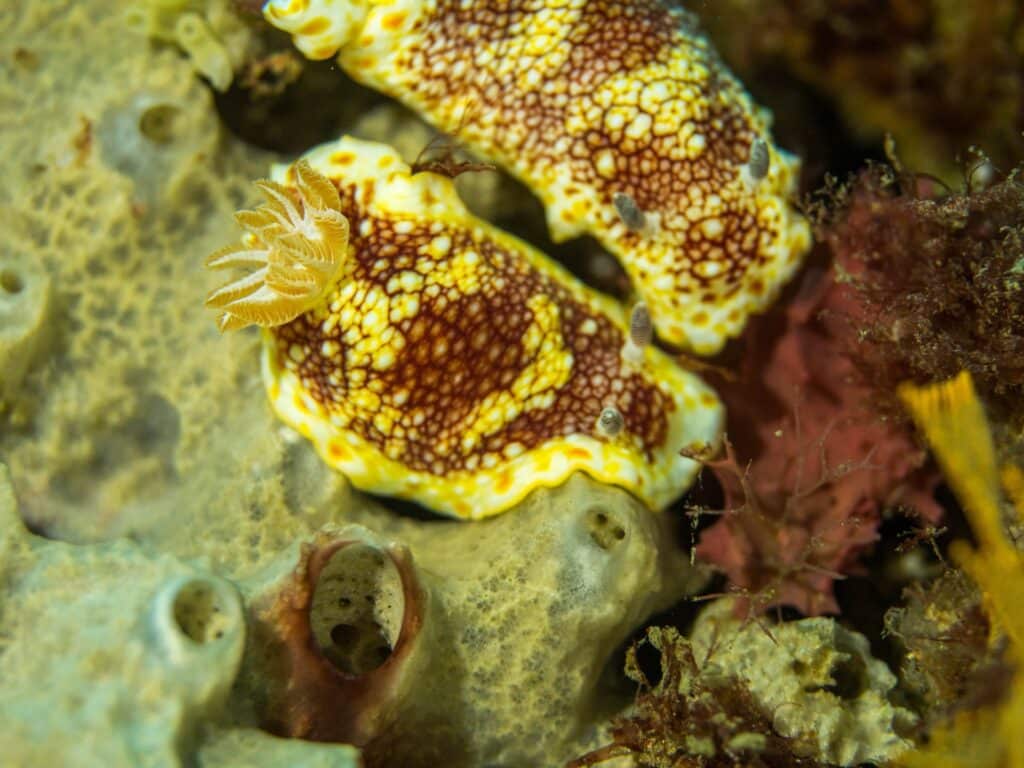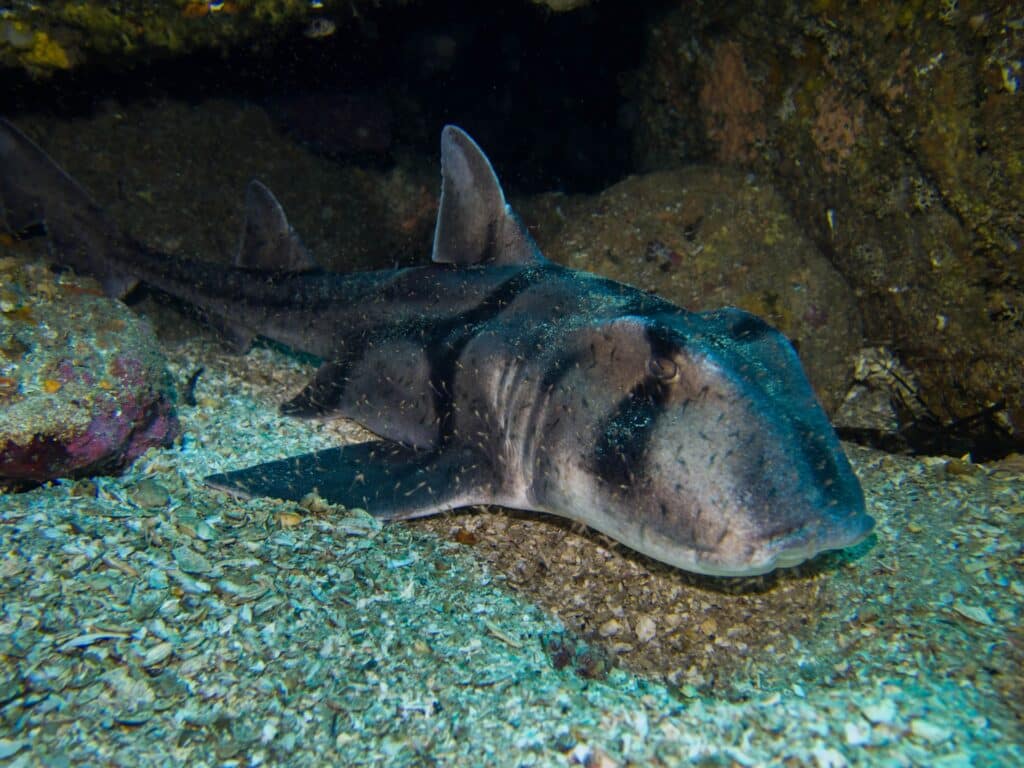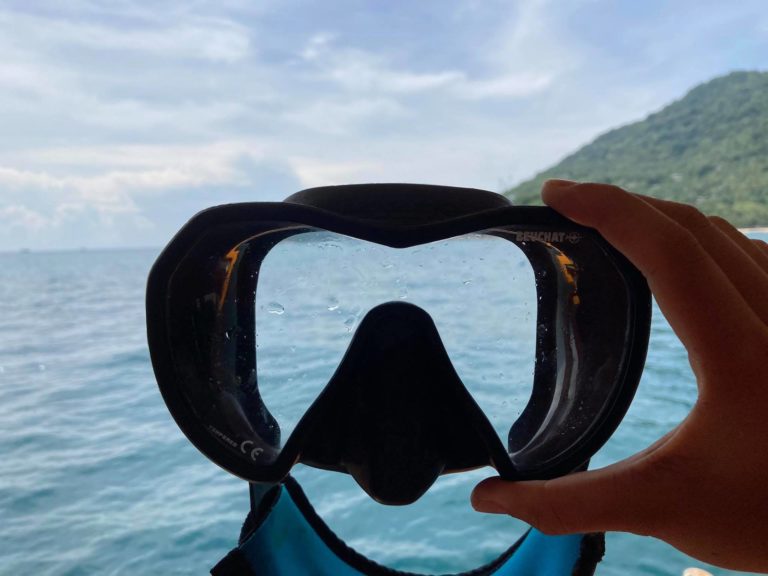Have you ever dived into the pool and realized that your ears started to hurt when you got deeper? This is because of the water pressure, and the reason why scuba divers and freedivers will need to learn how to equalize their ears. There are many different ways to equalize ears and you can try them to see what works easiest for you!
Ways to Equalize Ears
Valsava Manoeuvre
This is the most common method of equalizing and is easy for beginners when practicing equalizing techniques. Simply pinch your nose, then attempt to blow out through your nose. This will normally force air up the Eustachian tube and equalize the inner ear.
There is however a drawback to this method. It does not make use of the muscles which open the Eustachian tube. So, if there is already a pressure differential then the procedure will not work. If you cannot equalize, then you will need to ascend a little, before attempting again.
You must always be careful not to blow too hard as this can cause an ear rupture or other serious damage.
Swallowing
For some people, swallowing is the most effective method of clearing the ears. When you swallow, the throat muscles help to open the Eustachian tube.
Toynbee Maneuver
The Toynbee maneuver is performed by pinching your nose (in a similar way to Valsalva), then swallowing. This opens the Eustachian tubes while increasing the pressure in the Eustachian tube.
Read More: Toynbee Maneuver vs. Valsava Maneuver: Which is Safer?
Lowry Technique
Similar to the Toynbee maneuver, but combining swallowing with blowing, this can prove to be one of the most effective procedures.
Frenzel Maneuver
To perform this maneuver, pinch the nose closed and use your tongue to make a clicking or “K” sound.
Tips for making equalizing easier
- Practice equalizing in the hours leading up to your dive. Get in the habit of equalizing every couple of minutes. Then start to equalize on the surface before you start to descend.
- Look up – lookup up extends your neck and can help open the Eustachian tube.
- Descend feet first – descending with your head the right way up allows air to rise, and liquid to drain downwards.
- Use a descent line – having a line to hold on to will help control your descent rate and allows you to easily stop if problems occur.
- Stop if you feel and pain and ascend.
- Keep your mask clear for the duration of the dive. Water will irritate the mucous membranes.
Why do we need to Equalize?
The Eustachian tubes in our ears are normally closed to stop water and contaminants from entering our middle ears.
But water is heavy. When we go underwater that weight will start to build and push on our ears. The more it pushes, the more it will hurt.
This is why we will need to release that pressure and equalize that space.
By equalizing our ears, we are opening the Eustachian tubes slightly to allow the air from escaping. This will then correct the pressure in the middle ear and you won’t feel pain from the pressure
This does mean that as you go deeper, and under more weight, and more pressure, you will need to continue equalizing.
How often should I equalize?
You should equalize frequently as you go down when diving. This is because each time you descend, you are putting more pressure on your ears.
Some people will need to equalize every few centimeters/inches as their ears may be quite sensitive.
Some people find they only need to equalize every meter or so when descending.
I recommend equalizing as much as possible, especially if you are new to diving and not used to the pressure on your ears.
You will also find that some methods will work for your ears easier than the other methods. Trying them out in a controlled environment, such as a swimming pool, will make equalizing much easier on your next dive!
What does equalizing feel like?
Some people think equalizing means you will hear a ‘popping’ or clicking sound in your ears. This not always the case. For some people, they cannot hear or feel it when they equalize. However, if you do not have pain while descending then it means you have equalized!
What if I cannot equalize?
If you feel your ear is still ‘blocked’ and you feel pain in your ear, then this means it hasn’t equalized. You should then go up and ascend slightly. Just a few inches to relieve the pressure on your ears. You can then try one of the other ways to equalize your ears.
Try tilting your head from side to side or even wiggling your ear with your hand.
Remember the main thing is to go down slowly and equalize often. If you miss or ‘skip’ equalizing at a certain depth then you won’t be able to fix it until you ascend back to the level when your ear didn’t hurt.
What if I don’t equalize?
If you decide to continue downwards, even with the raging pain in your ears, then at some point you will puncture your eardrum. The pain will disappear but this is because the water is now flowing in and out of your inner ear. This is bad.
Bursting or puncturing your eardrum will result in the water reaching your balance organ. And this controls…your balance! This means you will have vertigo and lose your sense of up and down, on-land and underwater.
You will then get a Barotrauma which can take weeks, and in severe cases, months to heal. You won’t be able to get into the water and will need to be careful, even during a shower.
If you end up with an ear infection, when bacteria gets trapped in the ear, then this can be very painful and cause swelling.
Conclusion
When thinking about scuba diving, snorkeling, or freediving, then you will need to consider the ways to equalize ears. Practicing the different methods will make equalizing much easier on your next adventure. If you cannot equalize, then try again, or give your ears a rest. You won’t want to get caught with barotrauma or an ear infection that keeps you out of the water for longer!
